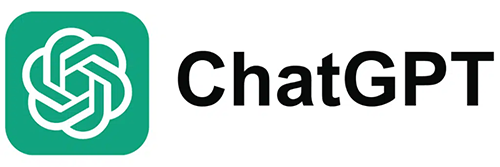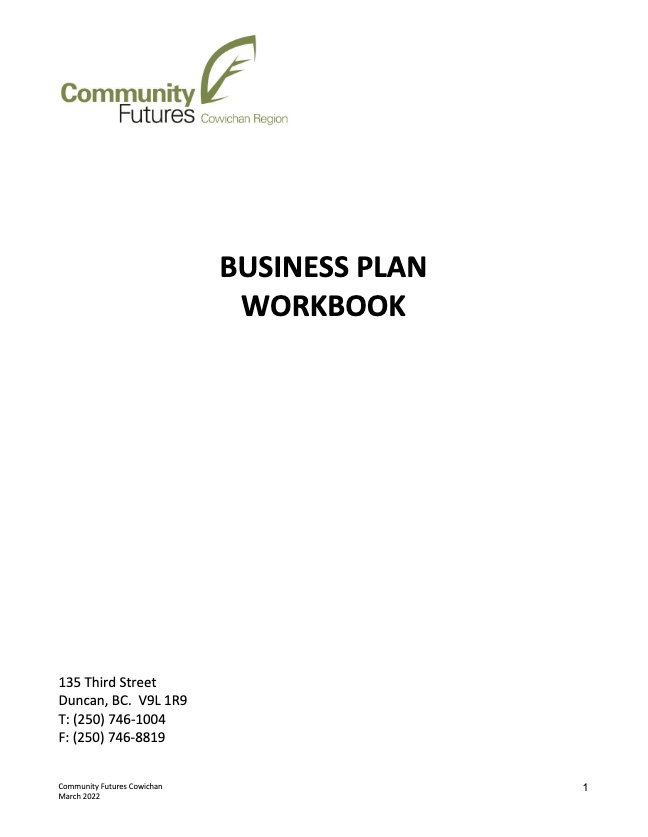Your ChatGPT Guide
As an entrepreneur, you often find yourself juggling multiple roles and responsibilities. At Community Futures Cowichan, our mission is to ease some of this burden by providing support and resources to help you succeed.
One of the key areas where we can assist is in crafting a comprehensive business plan, essential for securing financing and guiding your business strategy. We understand that writing a business plan can be daunting, which is why we offer a unique solution: using ChatGPT to help you create your business plan.
With the rapid advancement of technology, businesses must evolve to stay competitive. With this, we aim to leverage technology to assist you in developing a robust business plan. We have heard from many clients that starting a business plan is one of the biggest challenges they face. ChatGPT can help overcome this hurdle by providing structured prompts to guide you through the process.
The Importance of a Business Plan
A well-crafted business plan is more than just a document; it is a roadmap for your business’s future. It outlines your goals, strategies, and the steps you need to take to achieve them. A business plan serves several critical purposes:
- Securing Financing: Investors and lenders require a detailed business plan to assess the viability and potential profitability of your business and a small business loan.
- Strategic Planning: It helps you define your business goals and develop strategies to achieve them.
- Identifying Strengths and Weaknesses: The process of creating a business plan allows you to conduct a SWOT analysis, helping you to identify your business's strengths, weaknesses, opportunities, and threats.
- Operational Guidance: It provides a clear outline of your operational strategies and helps in managing day-to-day activities.
Leveraging ChatGPT for Your Business Plan
ChatGPT, an advanced AI tool, can significantly simplify the process of writing a business plan. By providing structured prompts, ChatGPT helps you to articulate your business ideas clearly and comprehensively. Here’s how you can use ChatGPT to develop each section of your business plan.
How to Use These Prompts to Write a Business Plan
 Begin with the business description. Copy the prompt, paste it into ChatGPT (at chatgpt.com), and fill in the parentheses with the relevant information. Review the information provided by ChatGPT and ask for revisions if necessary. In the same chat, you can request changes to the output.
Begin with the business description. Copy the prompt, paste it into ChatGPT (at chatgpt.com), and fill in the parentheses with the relevant information. Review the information provided by ChatGPT and ask for revisions if necessary. In the same chat, you can request changes to the output.
Here are the ChatGPT prompts to help you write a business plan:
- Executive Summary: Craft a concise overview of the business plan, highlighting key objectives, market analysis, unique selling points, and financial projections for a business named (insert name of the business) that provides/sells (insert product or service) to (insert target market).
- Business Description: Provide a detailed description of the business concept, including its products or services, target market, and value proposition for a business named (insert name of the business) that provides/sells (insert product or service) to (insert target market).
- Market Analysis: Conduct thorough research on the industry, target market, and competitors. Identify market trends, customer needs, and potential growth opportunities for a business named (insert name of the business) that provides/sells (insert product or service) to (insert target market).
- SWOT Analysis: Evaluate the business's strengths, weaknesses, opportunities, and threats. Consider internal factors like resources and capabilities, as well as external factors like market competition and regulatory changes for a business named (insert name of the business) that provides/sells (insert product or service) to (insert target market).
- Unique Selling Proposition (USP): Define what sets the business apart from competitors. Highlight unique features, benefits, or strategies that appeal to customers and create a competitive advantage for a business named (insert name of the business) that provides/sells (insert product or service) to (insert target market).
- Target Market Segmentation: Identify and profile specific segments of the target market. Consider demographics, psychographics, and behavioral characteristics to tailor marketing strategies effectively for a business named (insert name of the business) that provides/sells (insert product or service) to (insert target market).
- Marketing Strategy: Develop a comprehensive plan to reach and engage the target market. Outline channels, tactics, and messaging strategies for advertising, promotions, and branding efforts for a business named (insert name of the business) that provides/sells (insert product or service) to (insert target market).
- Sales Strategy: Define how the business will generate revenue and achieve sales targets. Describe pricing strategies, distribution channels, sales processes, and customer relationship management tactics for a business named (insert name of the business) that provides/sells (insert product or service) to (insert target market).
- Operations Plan: Detail the day-to-day operations of the business, including production processes, supply chain management, inventory control, and quality assurance procedures for a business named (insert name of the business) that provides/sells (insert product or service) to (insert target market).
- Management Team: Introduce key members of the management team and their roles in driving the business's success. Highlight their relevant experience, skills, and qualifications for a business named (insert name of the business) that provides/sells (insert product or service) to (insert target market).
- Financial Projections: Prepare detailed financial forecasts, including income statements, balance sheets, and cash flow statements. Project revenue, expenses, profits, and funding requirements for the short and long term for a business named (insert name of the business) that provides/sells (insert product or service) to (insert target market).
- Funding Requirements: Determine the amount of funding needed to launch or expand the business. Specify how the funds will be used and outline potential sources of financing, such as investors, loans, or grants for a business named (insert name of the business) that provides/sells (insert product or service) to (insert target market).
- Risk Management Plan: Identify potential risks and uncertainties that could impact the business's operations or financial performance. Develop strategies to mitigate these risks and ensure business continuity for a business named (insert name of the business) that provides/sells (insert product or service) to (insert target market).
- Legal and Regulatory Compliance: Outline the legal structure of the business (e.g., sole proprietorship, partnership, corporation) and ensure compliance with relevant laws, regulations, and industry standards for a business named (insert name of the business) that provides/sells (insert product or service) to (insert target market).
- Milestones and Metrics: Establish measurable goals and milestones to track the business's progress over time. Define key performance indicators (KPIs) and metrics for evaluating success and making data-driven decisions for a business named (insert name of the business) that provides/sells (insert product or service) to (insert target market).
These prompts cover essential aspects of a business plan, guiding the AI through the process of developing a comprehensive and well-structured document. Once your business plan is written, remove any sensitive information and upload it into a new chat for ChatGPT to review for clarity, grammar, and overall tone.
Detailed Guidance on Using Each Prompt
Executive Summary
The executive summary is the first section of your business plan but should be written last. It provides an overview of the entire plan, summarizing the key points. It should include the business name, location, and mission statement, a brief description of products or services, the target market, competitive advantages, and financial highlights. Aim for a concise, engaging summary that captures the essence of your business.
Business Description
In this section, delve deeper into what your business does. Describe your industry, the needs your business fulfills, and how your products or services meet these needs. Include the business’s history, the nature of your business, and the marketplace needs you are trying to satisfy.
Market Analysis
Conduct a thorough market analysis to understand the environment in which you operate. This includes an analysis of your industry, market size, expected growth, market trends, and a detailed look at your target market. Identify your primary competitors and analyze their strengths and weaknesses.
SWOT Analysis
A SWOT analysis helps in understanding the internal and external factors that can affect your business. Identify the strengths (S) and weaknesses (W) within your company, and the opportunities (O) and threats (T) from the external environment. This analysis is crucial for strategic planning and decision-making.
Unique Selling Proposition (USP)
Your USP differentiates your business from competitors. This could be a unique feature of your product, exceptional customer service, or a distinctive brand identity. Clearly articulate what makes your business unique and why customers should choose you over others.
Target Market Segmentation
Identify and define your target market. Break down the market into segments based on demographic, geographic, psychographic, and behavioral characteristics. This helps in tailoring your marketing strategies to meet the specific needs of different segments.
Marketing Strategy
Outline your plan for reaching your target market. This includes advertising, promotions, public relations, and branding strategies. Describe the channels you will use (e.g., social media, email marketing, SEO) and how you will measure the effectiveness of your marketing efforts.
Sales Strategy
Detail how you plan to sell your product or service. Describe your sales process, sales team, sales tactics, and sales goals. Explain your pricing strategy and any sales promotions or discounts you plan to offer.
Operations Plan
The operations plan describes the day-to-day operations necessary to produce and deliver your product or service. This includes the location, facilities, equipment, and technology needed. Outline the production process, inventory management, and quality control measures.
Management Team
Introduce your management team, highlighting their qualifications, experience, and roles within the company. This section should demonstrate that your team has the skills and experience needed to make the business successful.
Financial Projections
Provide detailed financial projections for at least the next three years. Include income statements, balance sheets, and cash flow statements. Explain your revenue model and forecasted expenses, and provide a break-even analysis.
Funding Requirements
Specify the amount of funding needed to start or grow your business. Explain how the funds will be used and the type of funding you are seeking (e.g., equity, debt, grants). Provide a repayment plan if you are seeking loans.
Risk Management Plan
Identify potential risks to your business and develop strategies to mitigate these risks. This could include market risks, operational risks, financial risks, and regulatory risks. Describe contingency plans for dealing with unexpected events.
Legal and Regulatory Compliance
Ensure that your business complies with all relevant laws and regulations. Outline the legal structure of your business and any licenses or permits required. Stay updated on industry standards and legal requirements.
Milestones and Metrics
Set clear, measurable goals for your business. Define key performance indicators (KPIs) to track your progress and evaluate your success. Regularly review your milestones and adjust your strategies as needed to stay on track.
Final Steps
Once you have completed your business plan using these prompts, it’s crucial to review the content for accuracy and authenticity. Remove any sensitive information and upload it into a new chat with ChatGPT for a final review of clarity, grammar, and overall tone.
Conclusion
Creating a business plan is a critical step in the journey of any entrepreneur. By leveraging ChatGPT and the structured prompts provided, you can create a comprehensive and effective business plan that will guide your business toward success.
At Community Futures Cowichan, we are here to support you every step of the way. If you have any questions about your business plan or need assistance with securing a small business loan, feel free to reach out to us.

